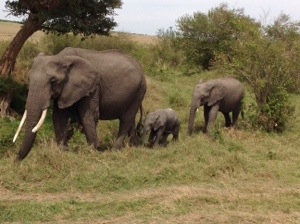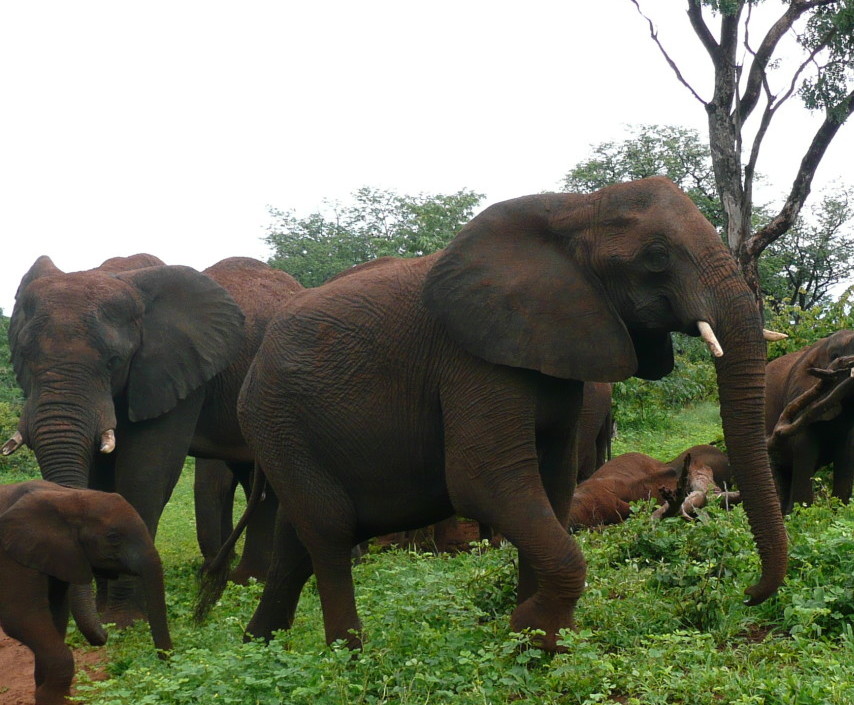
by Loti | Dec 10, 2013 | Africa, Animals, Keystone Species
Kenya. Hopping into the Range Rover, our guide asked which animal we wanted to see the most. Of course, my answer was elephants. We had seen 2 the day before, but one can never see enough elephants, at least in my book. We drove for a long time observing zebras, wildebeests, warthogs and finally, these three female elephants. And what a treat as the baby was only 3 weeks old! But why didn’t we just go straight to these amazing creatures and just spend all day with them? Surely the guides know where they are all the time? Not really. Elephants are very hard to track and subsequently count, it turns out. You can hardly go door to door conducting a census. And on average, they travel 15 miles a day which is a lot of ground. With conservation efforts largely based on numbers of elephants in a given herd, season to season, it is important to get accurate counts. Even with today’s technology, there are huge swings in estimates (numbers range from 400,000 to 700,000 worldwide). But beginning next year, a team of 46 scientists, led by the organization Elephants Without Borders, will try to count every elephant on the African continent using arial photography. This census information will be critical in helping us protect our elephants, hopefully giving this baby a chance to grow old and wise. Now that is...

by Loti | Jul 29, 2013 | Africa, Animals, Insects, Keystone Species
Africa. So what do a full moon and honey bees have in common? Elephants, of course. Really? Well they are both crop deterrents to elephants. As elephants and humans compete for scarce land and water resources, they come into conflict, sometimes with fatal results. But recently researchers found elephants stay away from crops during a full moon leading them to speculate elephants understand there is a greater risk of detection by humans during a moon lit night. Pretty smart elephants. And it turns out, elephants are afraid of bees. And rightly so. Swarming bees sting elephants around their eyes, inside their trunks and pierce the skin of baby calves. So researchers erected a beehive fence with hives every 10 meters around field crops. The results were phenomenal with only one elephant breaking through the “fence” in a 2 year period. Plus the farmers get the honey which provides much needed income. A real win, win if you ask me. And the idea came from Lucy King, a biologist with Save Our Elephants, who observed elephants avoiding trees with beehives. A simple idea which is making a huge difference in the lives of farmers and elephants. Brilliant! ...

by Loti | May 10, 2013 | Africa, Animals, Keystone Species, Thailand
Thailand. I can’t imagine what a starfish (shown in the photo with some other shells I found in Thailand) and an elephant might have in common. But they are both keystone species. So what is this new species? (And why have I never heard of it?) Think of an arch of stones with a stone at the top, the keystone. Without the keystone, the arch collapses. A keystone species (a plant or animal) acts as the top stone, playing a critical and unique role in maintaining the structure of an ecosystem. This concept was conceived by Robert Paine, a zoologist, back in 1969. Back then, he was studying tidal waters inhabited by starfish and mussels off the Pacific coast. The starfish (the only predators of the mussels) kept the mussel population in check. When he removed the starfish from the ecosystem, the mussels took over, crowding out all the other species and the ecosystem collapsed. The starfish (it turns out) were critical to the health of their ecosystem. In much the same way, the elephants in Africa eat and destroy small trees making room for the grasses for the grazing animals to eat. Without the elephants, Africa would become a woodland and no longer provide grasses for the zebra, wildebeests and other animals. So both the starfish and elephant are considered keystone species along with mountain lions, beavers, the sugar maple, grizzly bears and a host of others. Lions and tigers and bears, oh my!...





